 W
WNo. 1 Operational Conversion Unit (No. 1 OCU) was an operational training unit of the Royal Australian Air Force (RAAF). Formed in January 1959 at RAAF Base Amberley, Queensland, its role was to convert pilots and navigators to the English Electric Canberra bombers flown by Nos. 1, 2 and 6 Squadrons. The unit's complement of Canberras included T.4 and Mk.21 dual-control trainers, and Mk.20 bombers. Originally a component of No. 82 Wing, No. 1 OCU became an independent unit at Amberley in April 1968, its focus being the provision of operationally ready pilots for service with No. 2 Squadron in the Vietnam War. No. 1 OCU was disbanded in June 1971, following the withdrawal of No. 2 Squadron from South-East Asia. By then the RAAF's only Canberra unit, No. 2 Squadron ran its own conversion courses before disbanding in 1982.
 W
WThe 1st Battalion was an infantry battalion of the Australian Army. Although its numerical name was designated during the First World War, the 1st Battalion can trace its lineage back to 1854, when a unit of the Volunteer Rifles was raised in Sydney, New South Wales. This unit has since been redesignated a number of times, but through its links with the units of the colonial NSW defence force, the battalion's history includes services in Sudan and South Africa. During the First World War, the 1st Battalion was raised for overseas service in 1914 as part of the First Australian Imperial Force. Attached to the 1st Brigade, the battalion served in Egypt initially before taking part in the fighting in Gallipoli against the Turks. Later the battalion was sent to the Western Front where it fought in the trenches in France and Belgium as part of the Australian Corps. Following the end of the war the battalion was disbanded in 1919.
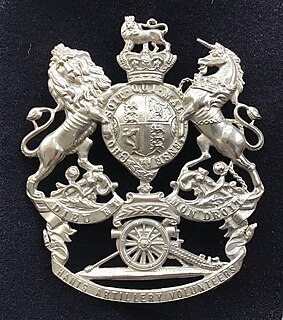 W
WThe 1st Wessex Artillery was a volunteer unit of the British Army that existed under various titles from 1860 to 1971, including active service in Mesopotamia in World War I and North Africa and Italy in World War II.
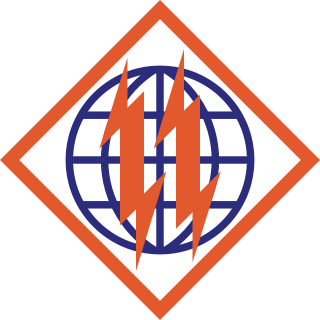 W
WThe 2nd Theater Signal Brigade is a military communications brigade of the United States Army subordinate to the Army Network Enterprise Technology Command with headquarters at Lucius D. Clay Kaserne, Germany.
 W
WThe 3rd Carabiniers was a cavalry regiment of the British Army. It was formed in 1922 as part of a reduction in the army's cavalry by the amalgamation of the 3rd Dragoon Guards and the Carabiniers, to form the 3rd/6th Dragoon Guards. It was renamed the 3rd Carabiniers in 1928 and amalgamated with the Royal Scots Greys, forming the Royal Scots Dragoon Guards in 1971.
 W
WThe 3rd Marine Expeditionary Brigade is a United States Marine Corps unit that is the "middleweight" crises response force of choice in the Pacific Area of Operation. It is the Marine Corps’ only permanently forward-deployed Brigade sized Marine Air-Ground Task Force and is a force in readiness able to rapidly deploy and conduct operations across the spectrum from humanitarian assistance and disaster relief to amphibious assault and high intensity combat. 3d MEB maintains a forward presence in the Pacific Theater to support contingencies and alliance relationships. 3d MEB also conducts combined operations and training throughout the region in support of United States national security strategy.
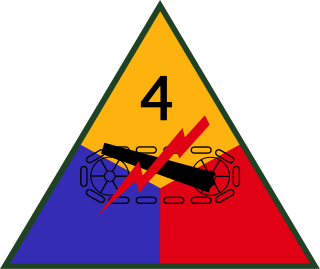 W
WThe 4th Armored Division was an armored division of the United States Army that earned distinction while spearheading General Patton's Third Army in the European theater of World War II.
 W
WNo. 5 Operational Training Unit was an operational training unit (OTU) of the Royal Australian Air Force. It was formed at Wagga Wagga, New South Wales, in October 1942 to train pilots and navigators for service in World War II. The unit was initially equipped with Bristol Beauforts and Beaufighters, and later received Douglas Bostons and de Havilland Mosquitos, among other types. No. 5 OTU was transferred to Tocumwal in October 1943, and then to Williamtown in mid-1944. It was reorganised as a fighter conversion unit flying P-51 Mustangs and CAC Wirraways in February 1946, and disbanded in July 1947.
 W
WThe 5th Air Force Division, was a division of the Bundeswehr's German Air Force. It was located from 1963 to 1971 in Birkenfeld and from 1990 to 1994 in Strausberg (Eggersdorf). It was the successor of the Kommando LSK/LV.
 W
WThe 11th Infantry Brigade is an inactive infantry brigade of the United States Army. It was first formed as part of the 6th Division during World War I. It is best known for its service with the 23rd Infantry Division from 1967 through 1971 in the Vietnam War as a light infantry brigade. The brigade is known for its responsibility in the My Lai Massacre.
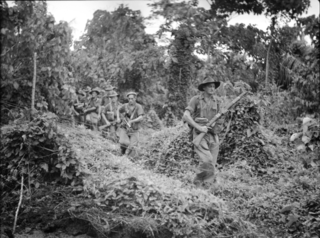 W
WThe 19th Battalion was an infantry battalion of the Australian Army. Although the unit's numerical designation was bestowed upon it during World War I, the unit can trace its origins back to 1860 when a Volunteer Rifle corps was raised in South Sydney. During World War I, the 19th Battalion was raised as a unit of the Australian Imperial Force, attached to the 5th Brigade, of the 2nd Division. The unit was formed in 1915 and was first sent to Gallipoli where it fought against the Turks, before being withdrawn from the peninsula and being sent to France in early 1916, where it served in the trenches along the Western Front. Over the next two years the battalion fought in many major battles and won numerous battle honours. In April 1918, it took part in defending against the German Spring Offensive, before the Allies launched their own last-ditch effort as part of the Hundred Days Offensive. The battalion was disbanded in October 1918 due to manpower shortages in the AIF and most of its men were sent to reinforce the other three battalions of the 5th Brigade.
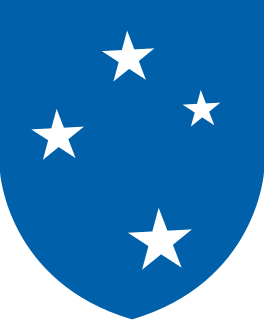 W
WThe 23rd Infantry Division, initially, and more commonly known as, the Americal Division, of the United States Army was activated 27 May 1942 on the island of New Caledonia. In the immediate emergency following Pearl Harbor, the United States had hurriedly sent a task force to defend New Caledonia against a feared Japanese attack. This division was the only division formed outside of United States territory during World War II. At the suggestion of a subordinate, the division's commander, Major General Alexander Patch, requested that the new unit be known as the Americal Division—the name being a contraction of "American, New Caledonian Division". This was unusual, as all other U.S. divisions are known by a number. After World War II the Americal Division was officially re-designated as the 23rd Infantry Division. However, it was rarely referred to as such, even on official orders.
 W
WThe 39th Military Airlift Squadron is an inactive United States Air Force unit. Its last was assigned to the 436th Military Airlift Wing, Military Airlift Command, stationed at Dover Air Force Base, Delaware. It was inactivated on 31 March 1971.
 W
WThe 126th Aviation Regiment is a unit of the U.S. Army National Guard.
 W
WThe 71st Flying Training Wing is a United States Air Force unit assigned to Air Education and Training Command. It is stationed at Vance Air Force Base, Oklahoma where has conducted pilot training for the Air Force and allied nations since 1972. It also is the host unit for Vance.
 W
WThe 99th Reconnaissance Squadron is a squadron of the United States Air Force. It is assigned to the 9th Operations Group, Air Combat Command, stationed at Beale Air Force Base, California. The squadron is equipped with the Lockheed U-2 Dragon Lady reconnaissance aircraft.
 W
WThe 201st Expeditionary Military Intelligence Brigade is located at Joint Base Lewis-McChord, Washington. The 201st was originally named the 201st Military Intelligence Brigade and on 3 July 2008 it became the Army's third active duty battlefield surveillance brigade and was renamed the 201st Battlefield Surveillance Brigade (BfSB). The US Army decided to get rid of its BfSBs and the 201st was realigned into a new expeditionary military intelligence brigade.
 W
WThe 464th Troop Carrier Group was a theater airlift unit of the United States Air Force during the Cold War. It served in the United States under Tactical Air Command between 1953 and 1957. The group operated Fairchild C-119 Flying Boxcar and Fairchild C-123 Provider aircraft as the flying element of the 464th Troop Carrier Wing until being inactivated when the wing was reorganized.
 W
WThe 1500th Air Transport Wing (ATW) is a discontinued United States Air Force unit. It was last active in 1971 at Hickam Air Force Base, Hawaii under the designation 6486th Air Base Wing (ABW). The 1500th ATW was a heavy cargo transport wing of Military Air Transport Service (MATS), formed on 1 June 1949. In 1952 the wing lost its operational elements and became the base support element for Hickam until it was replaced by the 15th Air Base Wing in 1971.
 W
WThe 4780th Air Defense Wing is a discontinued United States Air Force organization. Its last assignment was with the Air Defense Weapons Center at Perrin Air Force Base, Texas, where it was discontinued in 1971. The wing was organized in 1962 when Air Defense Command (ADC) assumed the interceptor pilot training mission from Air Training Command (ATC).
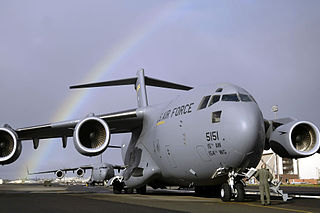 W
WThe 15th Wing is a wing of the United States Air Force at Joint Base Pearl Harbor-Hickam, Hawaii. The wing reports to 11th Air Force, Headquartered at Joint Base Elmendorf-Richardson, Alaska.
 W
WAir Transport Wing 62 is a wing of the German Air Force (Luftwaffe). The wing was founded in 1959 and is currently based at Wunstorf Air Base in Lower-Saxony, Germany operating Airbus A400M fixed-wing aircraft. Air Transport Wing 62 is subordinate to Air Force Troop Command which in turn is subordinate to Air Force Command. Operational command rests, however, with European Air Transport Command.
 W
WThe 1st London Artillery Brigade or City of London Artillery was a volunteer field artillery unit of the British Army, part of the Territorial Force and later the Territorial Army, that existed under various titles from 1863 to 1971 and fought in World War I and World War II.
 W
WThe Far East Fleet was a fleet of the Royal Navy which existed between 1952 and 1971.
 W
WThe former Royal Air Force Far East Air Force, more simply known as RAF Far East Air Force, was the Command organisation that controlled all Royal Air Force assets in the east of Asia. It was originally formed as Air Command, South East Asia in 1943 during the Second World War. In 1946, this was renamed RAF Air Command Far East, and finally Far East Air Force in June 1949.
 W
WThe Far East Fleet was a fleet of the Royal Navy which existed between 1952 and 1971.
 W
WI Field Force, Vietnam was a corps-level command of the United States Army during the Vietnam War. Activated on 15 March 1966, it was the successor to Task Force Alpha, a provisional corps command created 1 August 1965 for temporary control of activities of U.S. Army ground combat units arriving in Vietnam. I Field Force was a component of U.S. Military Assistance Command Vietnam (MACV) and had its headquarters at Nha Trang.
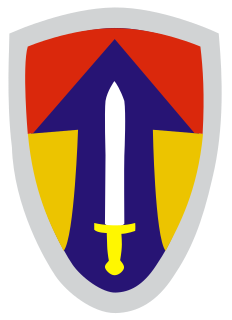 W
WII Field Force, Vietnam was a United States Army Corps-level command during the Vietnam War.
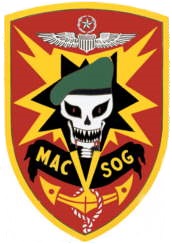 W
WMilitary Assistance Command, Vietnam – Studies and Observations Group (MACV-SOG) was a highly classified, multi-service United States special operations unit which conducted covert unconventional warfare operations prior to and during the Vietnam War.
 W
WNo. 205 Squadron was a Royal Air Force unit formed on 1 April 1918. Prior to this it had existed as No. 5 Squadron of the Royal Naval Air Service (RNAS). In 1929, it became the first RAF squadron to be permanently based in Singapore, taking as its motto Pertama di Malaya. No. 205 Squadron operated during World War II and the Cold War before disbanding on 31 October 1971.
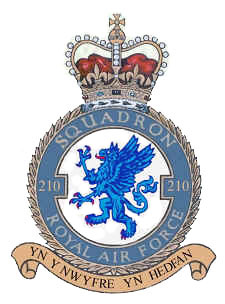 W
WNo. 210 Squadron was a Royal Air Force unit established in World War I. Disbanded and reformed a number of times in the ensuing years, it operated as a fighter squadron during World War I and as a maritime patrol squadron during the Spanish Civil War, World War II and the Cold War before it was last deactivated in 1971.
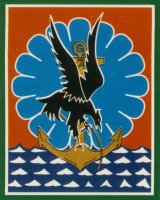 W
WThe 11th Parachute Brigade is a unit of the French Army, dominantly infantry, part of the French Airborne Units and specialized in air combat and air assault. The brigade's primary vocation is to project in emergency in order to contribute a first response to a situational crisis. An elite unit of the French Army, the brigade is commanded by a général de brigade with headquarters in Balma near Toulouse. The brigade's soldiers and airborne Marines wear the red beret (amaranth) except for the Legionnaires of the 2nd Foreign Parachute Regiment who wear green beret of the French Foreign Legion.
 W
WPhu Cat Air Base Security Forces of the United States Air Force were Air Police and Security Police squadrons responsible for the air base ground defense of Phù Cát Air Base in South Vietnam during the Vietnam War.
 W
WRoyal Air Force Long Kesh or more simply RAF Long Kesh is a former Royal Air Force station at Maze, Lisburn, Northern Ireland.
 W
WThe Royal Scots Greys was a cavalry regiment of the British Army from 1707 until 1971, when they amalgamated with the 3rd Carabiniers to form The Royal Scots Dragoon Guards.
 W
WThe Western Fleet was a fleet of the Royal Navy from June 1967 to 1971.
 W
WThe XXII Corps was a corps of the United States Army during World War II and the Cold War. Its lineage was assigned to II Field Force, Vietnam, during the Vietnam War.